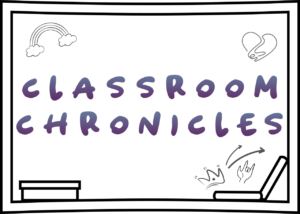
Revolutionizing Corporate Learning: Innovative Approaches to Curriculum Design
Corporate learning has been experiencing a transformation in recent years as organizations seek to equip their employees with the skills necessary to succeed in an ever-evolving business landscape. One of the key areas that have seen innovation is the curriculum design, which is a critical aspect of any corporate training program. Innovative approaches to curriculum design in corporate learning can help organizations enhance their training programs, leading to a more skilled and productive workforce.
The traditional approach to curriculum design in corporate learning typically involves creating a list of topics to be covered and developing a set of learning objectives for each topic. However, this approach does not take into account the specific needs of the organization or its employees. Innovative approaches to curriculum design, on the other hand, are tailored to meet the specific needs of the organization and its workforce.
One such approach is competency-based learning. Competency-based learning focuses on identifying the skills and knowledge that employees need to succeed in their roles and developing a curriculum that focuses on these competencies. This approach allows employees to develop the skills they need to excel in their current roles while also preparing them for future opportunities within the organization.
Another innovative approach to curriculum design is personalized learning. Personalized learning is an approach that recognizes that employees have different learning styles, preferences, and needs. It involves creating customized learning paths for each employee based on their specific needs, goals, and interests. This approach enables employees to take ownership of their learning and develop skills and knowledge that are relevant to their roles and career aspirations.
Gamification is another innovative approach to curriculum design that is gaining popularity in corporate learning. Gamification involves incorporating game elements, such as points, badges, and leaderboards, into learning activities. This approach makes learning more engaging and fun, leading to higher levels of motivation and retention.
Finally, microlearning is an innovative approach to curriculum design that focuses on delivering small, bite-sized pieces of content that can be consumed in short periods of time. This approach is ideal for busy employees who may not have the time or attention span for longer learning activities. Microlearning also allows employees to learn at their own pace and revisit content as needed.
Takeaway
In today’s rapidly changing business landscape, it is more important than ever for organizations to invest in the development of their employees. Innovative approaches to curriculum design in corporate learning provide a powerful tool for achieving this goal. By adopting new strategies, such as competency-based learning, personalized learning, gamification, and microlearning, organizations can create training programs that are engaging, relevant, and effective.
Competency-based learning allows employees to develop the skills they need to excel in their current roles while also preparing them for future opportunities within the organization. Personalized learning recognizes that employees have different learning styles, preferences, and needs, and tailors learning activities to meet their unique requirements. Gamification makes learning fun and engaging, leading to higher levels of motivation and retention, while microlearning enables busy employees to learn at their own pace and on their own schedule.
By embracing innovation in curriculum design, organizations can stay ahead of the curve and ensure that their employees are equipped with the skills and knowledge necessary to succeed in an ever-evolving business landscape. Innovative approaches to curriculum design in corporate learning not only enhance training programs but also help organizations develop a more skilled and productive workforce. This, in turn, can lead to increased employee satisfaction, improved retention rates, and ultimately, greater success for the organization as a whole.
In conclusion, the importance of innovative approaches to curriculum design in corporate learning cannot be overstated. Organizations that invest in these strategies are more likely to thrive in today’s competitive business environment. As the landscape continues to evolve, those that stay ahead of the curve will be best positioned to succeed and achieve their goals.

